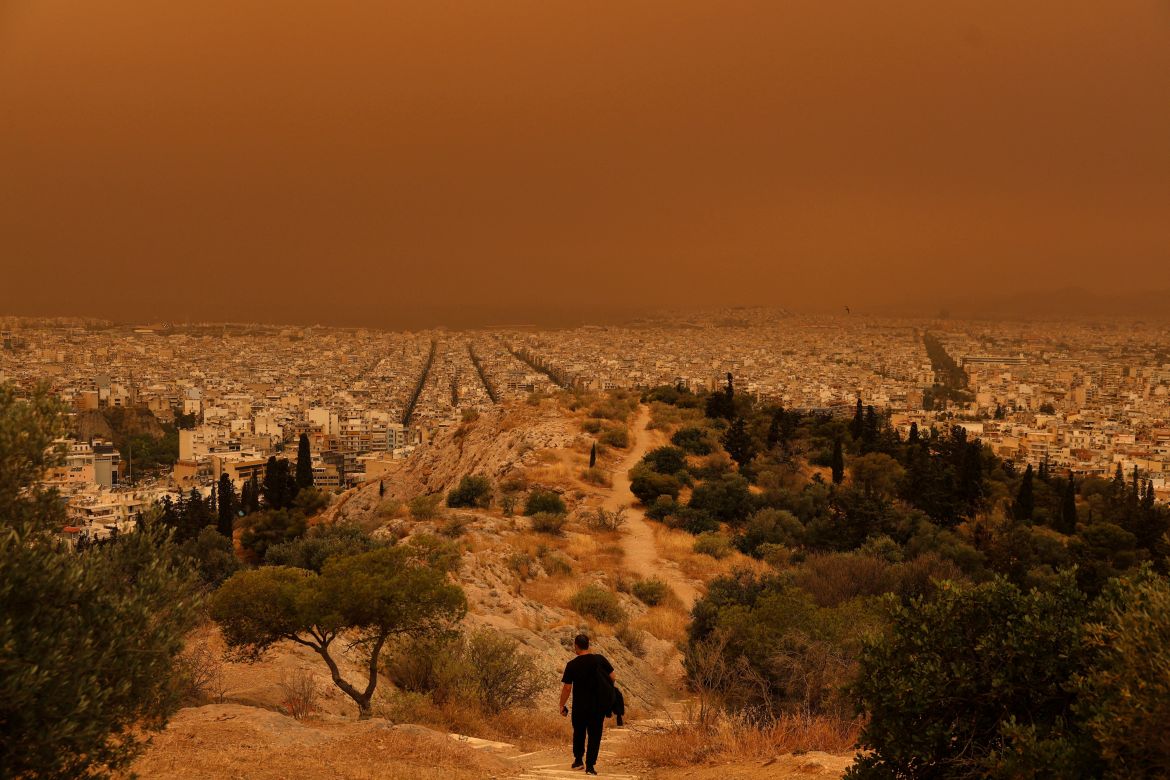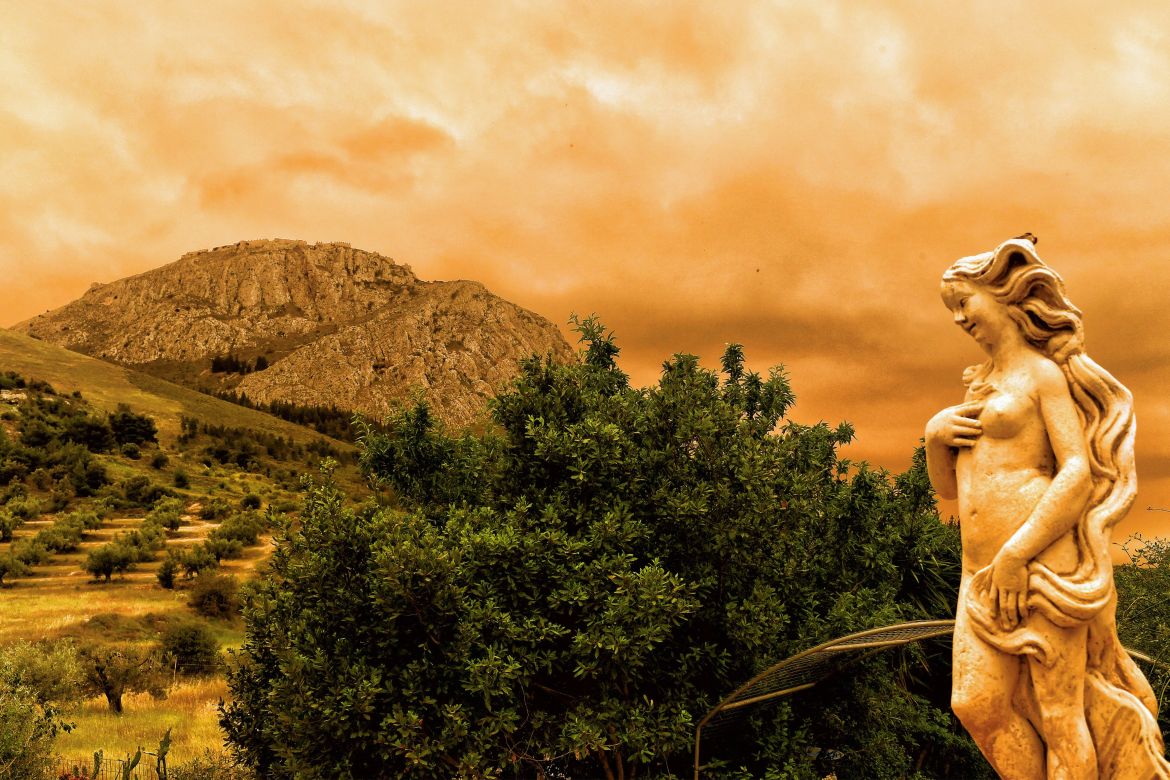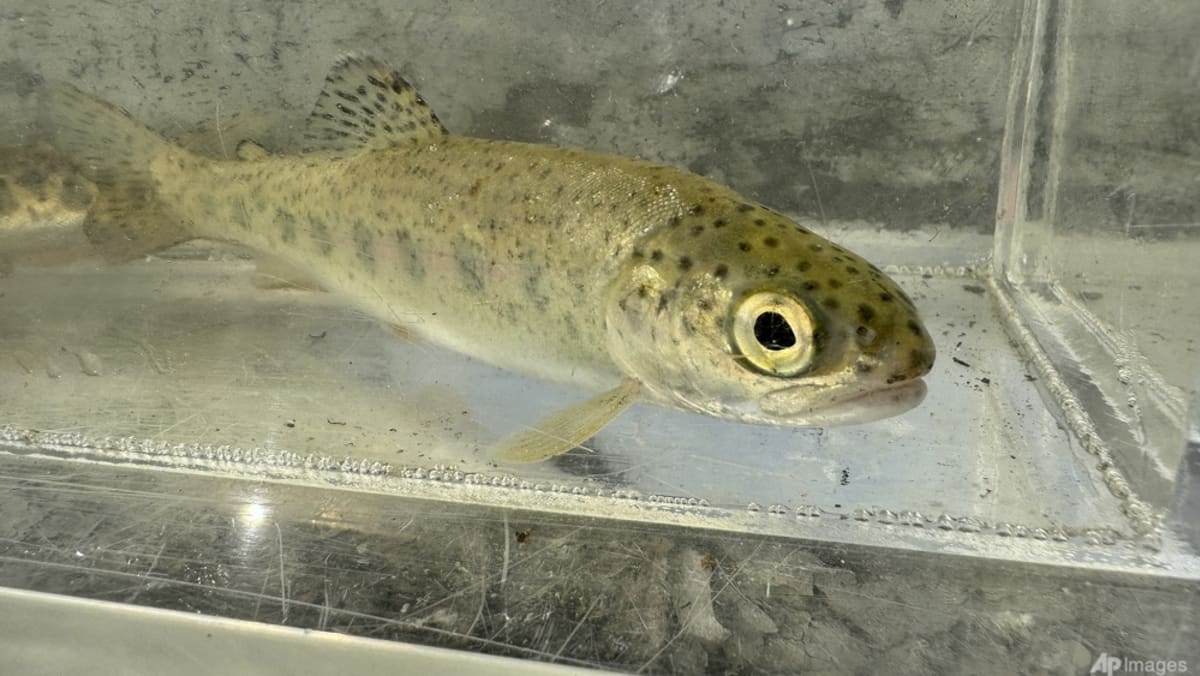
Published On 24 Apr 2024
Athens turned orange as winds deposited sand from North Africa on the Greek capital.
Skies over southern Greece turned an orange hue on Tuesday as dust clouds blown across the Mediterranean Sea engulfed the Acropolis and other Athens landmarks.
Strong winds carried the dust from the Sahara Desert, giving the atmosphere of the capital a Martian-like filter amid the last hours of daylight.
The skies were predicted to clear on Wednesday as winds shift and move the dust, with temperatures dipping.
On Tuesday, the daily high in parts of the southern island of Crete topped 30 degrees Celsius (86 degrees Fahrenheit), more than 20C (36F) higher than temperatures registered across northern Greece.
The winds over recent days have also fanned unseasonal wildfires in the south.
The fire service reported on Tuesday that a total of 25 wildfires had broken out across the country in the past 24 hours.
Three people were arrested on the Aegean Sea resort island of Paros on suspicion of accidentally starting a scrub blaze, it said. No significant damage or injuries were reported, and the fire was quickly contained.
Greece suffers devastating, and often deadly, forest blazes every summer. Last year, the country recorded the European Union’s largest wildfire in more than two decades.
Persistent drought, combined with high spring temperatures, has raised fears of a particularly challenging period for firefighters in the coming months.



















 English (US) ·
English (US) ·  Turkish (TR) ·
Turkish (TR) ·